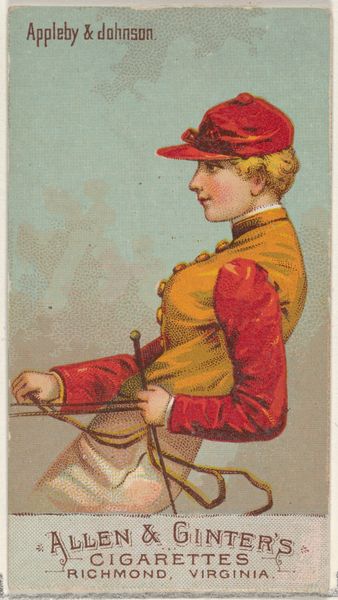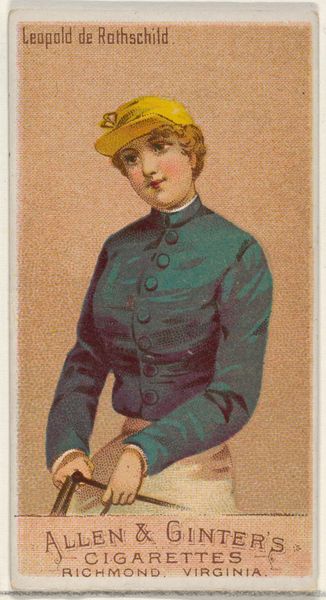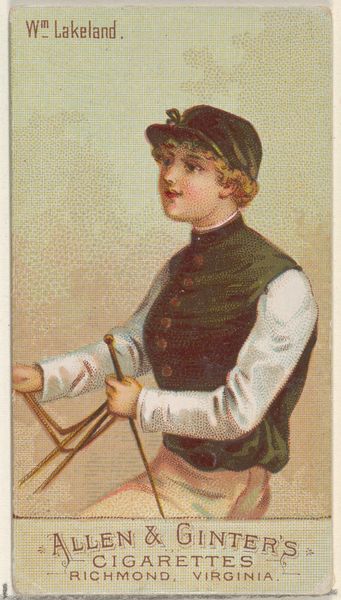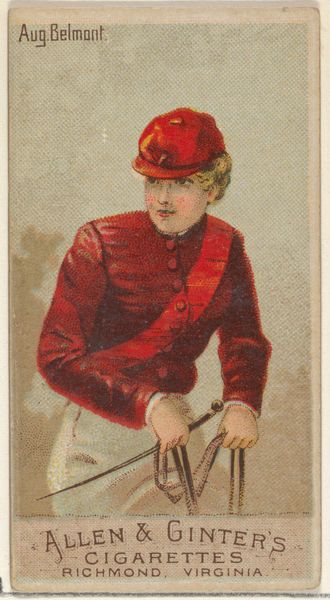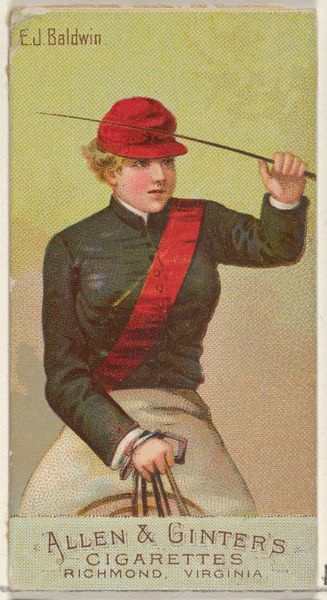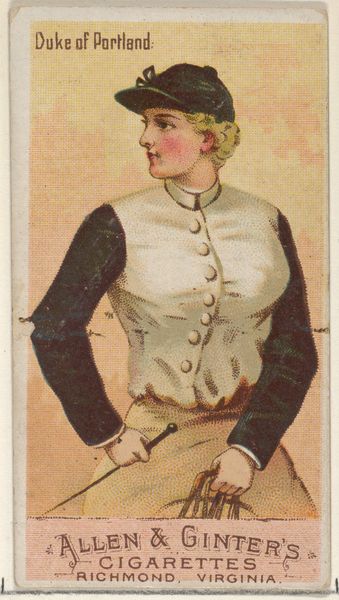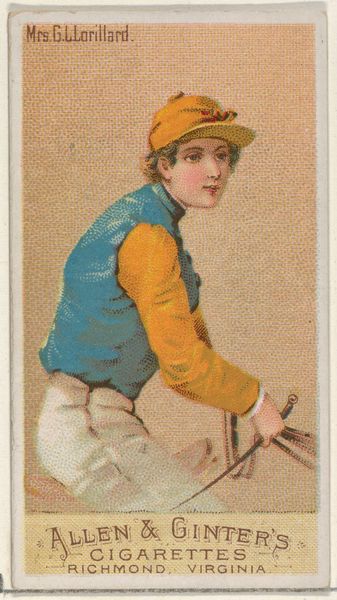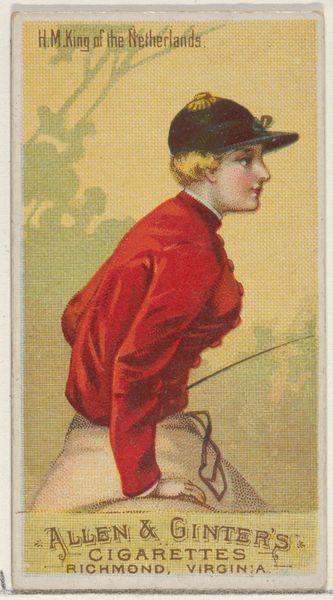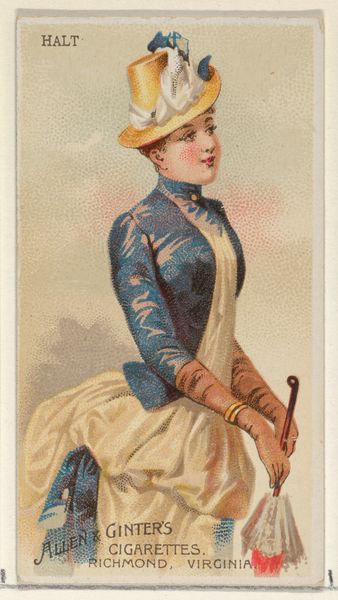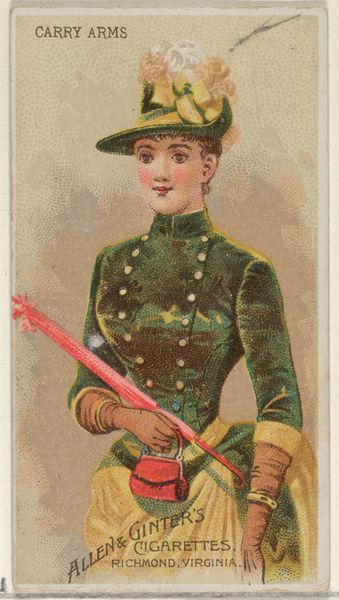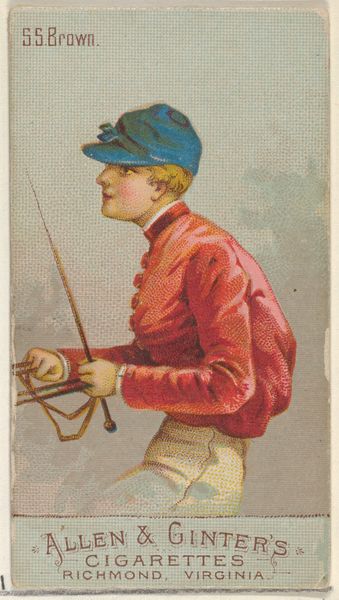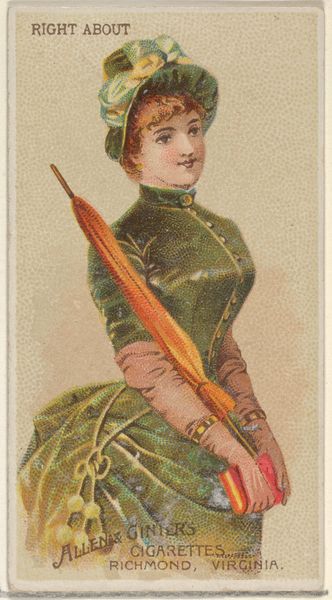
D.D. Withers, from the Racing Colors of the World series (N22a) for Allen & Ginter Cigarettes 1888
0:00
0:00
drawing, print
#
drawing
#
toned paper
#
green and blue tone
# print
#
caricature
#
oil painting
#
coloured pencil
#
coffee painting
#
men
#
watercolour illustration
#
portrait art
#
watercolor
#
fine art portrait
#
profile
Dimensions: Sheet: 2 3/4 x 1 1/2 in. (7 x 3.8 cm)
Copyright: Public Domain
Curator: This portrait of D.D. Withers, a subject from Allen & Ginter's "Racing Colors of the World" series, produced around 1888, is a rather intriguing artifact. Editor: Intriguing, yes, and instantly, I'm struck by its almost nostalgic sweetness – the gentle color palette and the intimate scale, hinting at something handcrafted and decidedly material. What exactly are we looking at here? Curator: We are looking at an example of chromolithography. Chromolithography prints like these were cheap to produce and popular forms of distribution around this time. In this case, part of a series of cigarette cards. They were widely collected, depicting famous athletes and figures of the day. Editor: Cigarette cards. Right there, we have a mass-produced, consumer object elevated, or at least aiming for, a status of cultural relevance. Consider the paper stock, the inks... these were decisions impacting cost and dissemination, part of an attempt to intertwine commerce with social values. It also shows the value that consumer culture put on horse racing. Curator: I'm interested in how Withers, depicted in his racing silks, comes to embody not only an individual portrait, but the spectacle of racing. His calm demeanor belies the intensity and excitement inherent in the sport. Editor: Exactly, there’s this tension. Look at how his clothing becomes not just garb but a coded marker. We might analyze the dye processes themselves, linking it back to particular geographic locations of their sourcing and manufacture at the time. This would speak directly to patterns of industrial production! Curator: So the imagery in the uniform speaks to race and prestige but the cheap availability speaks to the broad popularity of this sport. Editor: It makes you wonder, doesn’t it, how so much information and contradiction could be embedded in one small piece of card stock? What layers of labor and intent went into making such a seemingly disposable object so powerfully evocative. Curator: I will keep this in mind while looking closer into racing attire of the day. Editor: Absolutely! I will explore these cards as an expression of their industrial processes of dissemination.
Comments
No comments
Be the first to comment and join the conversation on the ultimate creative platform.
